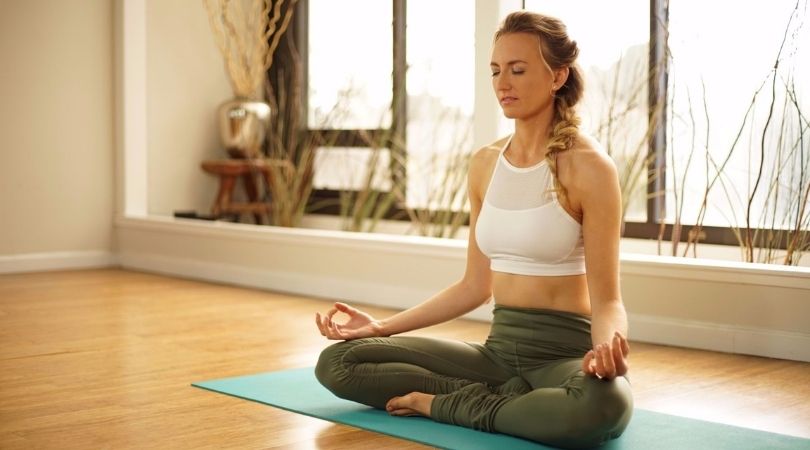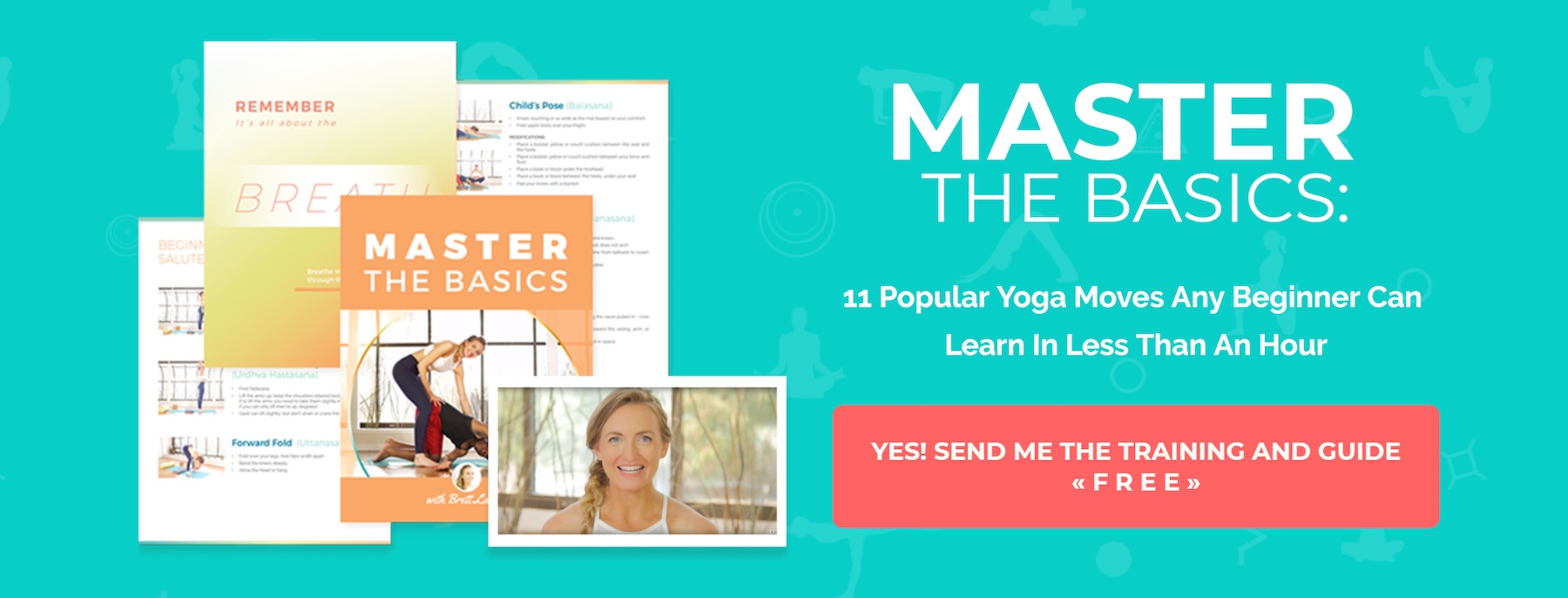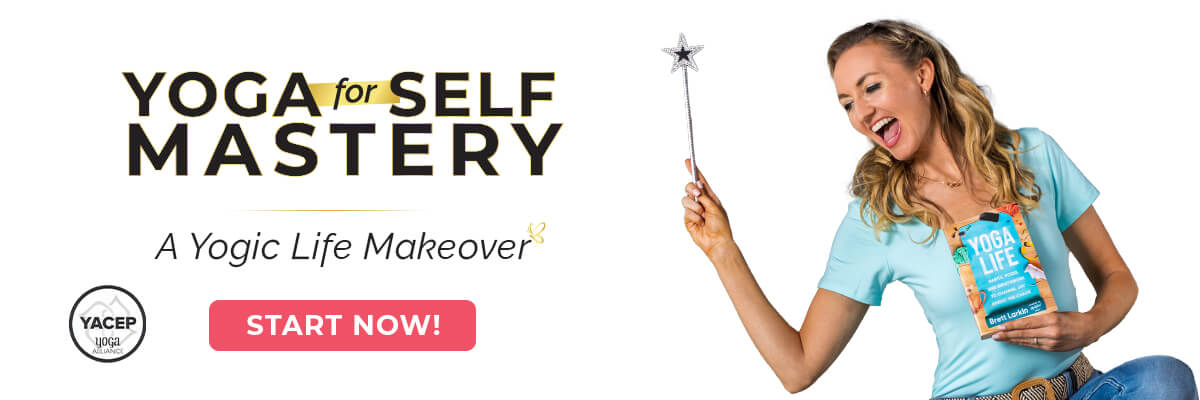
If you’re looking to further your spiritual knowledge and have found yourself among the moral code outlined by the Yamas and Niyamas, then you’re in the right place.
There’s a vortex of information out there about the yogic philosophy but I’m here to narrow down the playing field and get to the root of what the Niyamas are trying to teach us in everyday life.
The Niyamas are the second path of eight limbs of yoga, as outlined by Patanjali’s Yoga Sutras. Following the Yamas, the Niyamas give us ethical guidelines that lead to inner peace.
As practicing and curious yogis, the Niyamas are actually a great tool and guideline for how to live our lives. While Yamas focus on our restraints, where we should be holding back and what we should, where possible, try to avoid, Niyamas are kind of our own yogic affirmations.
They are the things that we can and should be doing in order promote a wholly ethical, peaceful and freeing existence.
And in this day and age…what could sound better than that?
Outlined by the yoga king and ultimate guru himself Patanjali, these fundamental principles of yogic living are crucial in understanding the yogic path. He describes the Yamas and Niyamas as a ‘path to perfection’, so hey…I’m not saying we can follow these to the absolute letter. No one’s perfect and all that. But I, for one, want to give it my best shot.
You in?
Sweet. Glad we’re in this together yoga friend. So let’s break this down and see what we are in for…
What are the 5 Niyamas?
Like the five Yamas–Ahimsa (nonviolence), Satya (truthfulness), Asteya (non-stealing), Brahmacharya (chastity), and Aparigraha (non-coveting)—the 5 Niyamas serve as a sort of moral code for daily life. By following these ethical guidelines, it is said that we will more easily achieve inner peace, contentment, and, eventually, enlightenment.
Don’t worry. They’re not meant to stress you out. Instead, they’re meant to guide you in everyday life beyond your physical practice as a sort of devotion to God or a higher power.
Just like your asana practice is made up of one yoga pose after another, your personal practice as a true yoga practitioner is made up of one moral code after another.
You know, being a yogi both on and off the yoga mat.
1. Saucha – Purity
Within Patanjali’s yoga sutras, this Niyama is specifically referring to mind, body and speech. This can apply not only to ourselves but also to the environment we reside in, the people we surround ourselves with and the things that we do to fuel and maintain our bodies.
So what does this mean for us?
Drink more water, read some more positive insta quotes and make sure you tell someone you love them each day?
Yeaa unfortunately it’s a little more than that. However, it actually is that kinda vibe.

The idea is that if we are taking in negativity or toxic energy, thoughts or ideals, then we will be distracted from our spiritual paths. It’s for this reason that we practice our asanas, meditation and pranayama breathing techniques. It’s why pratyahara (sense withdrawal) is a limb unto itself. These are all proactive things we can do to purify the body and mind.
What does this look like on a more practical day-to-day level?
Maybe clear out that one room in your house that you’ve been meaning to declutter for months. Perhaps have a look at if you can clean up your diet and add some more whole foods to your meals. If you’re able to, maybe take some time for self-reflection and see if you can start to replace any damaging negative thought patterns with some affirming, positive ones.
It’s all about taking small steps in daily life to get ourselves to a place of pure and positive living.
I believe in us!!!
2. Santosha – Contentment / Acceptance
This one is my favorite.
Why?
Because it encourages us to be okay exactly where and as we are.
So often, we are searching for the next thing or looking for fulfillment in places other than where we seem to be at that moment. This Niyama is advising to toss those thoughts of ‘what’s next?’ to the side and become wholly present. We are invited to accept and be grateful for all the things that we do have rather than focus on and stress over all of the things we don’t. It is a reminder that material possessions and temporary pleasures are just that…temporary.

True happiness and contentment can be found in each conscious moment if we choose to see it that way. Now I’m not saying that this means we need to excuse wrong-doings or be accepting of bad things that may happen to us in our lives.
In fact, quite the opposite.
It’s a way of realizing and healing the things that we so often try to avoid. It confronts us with the cold, hard truth of our situation, which is so easy to just bury away and forget about by finding frivolous distractions and harmful practices.
Hands up who would rather hide their feelings at the bottom of a Ben and Jerrys rather than confront and accept the hard truth of their hurt?
Ya, me too. And I’m not saying this is easy.
Santosa is the willingness to see clearly. This can sometimes be scary but it is soooo necessary in order to heal. If we aren’t honest with ourselves then how can we expect to move forward?
Instead of letting the negative thought consume you or becoming obsessed with changing things in your life to suit your expectations, Santosa says to let.it.go.
Letting go of old behaviors and thought patterns is truly the key to happiness.
Work for what you want, whether that’s happiness or inner peace or nailing that advanced yoga pose you’ve been trying for. But don’t get too hung up on your expected outcomes. Take the necessary steps to move forward and then be content with the rest.
Santosa is contentment and acceptance of the truth of the present moment.

3. Tapas – Practice, Discipline
Chances are, if you’re reading this you already have a pretty well-established yoga practice and are disciplined in the sense of finding time to get on the yoga mat.
But what does this mean in other aspects of our life and why should we cultivate a disciplined mindset? ‘Tapas’ believe it or not, is not referring to a very delicious Spanish delicacy in this context. (I wish it was too)
It is, in this sense, derived from the word ‘tap’ which means ‘to burn’.
The idea is to burn impurities out of our lives by disciplining our minds to commit to our yogic practices. It’s basically a real test of willpower. When we challenge the often unhealthy desires of our minds by practicing self-discipline, we are able to banish negative or toxic energies from disrupting our spiritual paths.
For example, getting up an hour earlier to fit in a yoga practice is cleaaarly not what the body craves when the alarm bell goes off but by staying committed and setting an intention that you stick to, you get to reap all the benefits later.
Tapas is an attempt to burn and let go of all desires that serve as a roadblock in our path to our true purpose.
4. Svādhyāya – Self-Study
Traditionally, this Niyama involved studying ancient philosophical text.
I mean hey, I’m all for having a flick through the Bhagavad Gita or Patanjali’s Yoga Sutra text to see what resonates but it’s certainly not going to be my new bedtime reading any time soon (props to you, if it’s yours!)
In the present day, this Niyama means to apply yogic philosophy to daily life and inspect our lives through this lens.
The practice of self-study is a way to approach each situation with an open mind. It’s about reflecting and meditating on the lessons that we can take from every situation. By being open to learning and staying positive about embracing new concepts and ideas, we open ourselves up to molding and bettering ourselves into more well-rounded people.
Svādhyāya is concerned with finding opportunities to better understand ourselves and the world around us. And let’s be honest…life is full of those.
Even the toughest moments provide us with space to grow and evolve into more self-aware and spiritually aligned humans. This Niyama is about taking those negative moments and turning them into positives.
5. īśvarapranidhāna – Devotion, Surrender
I’m going to avoid using the G word here. I get that not everyone is religious and if you are, then this will hold a specific meaning for you, however, this Niyama really is universal and all-encompassing.
It’s about holding on to that feeling of divine energy and that there is something out there greater and bigger than all of us. Whether you refer to this as ‘universal energy’, a particular deity, ‘oneness’, ‘light’ or anything else, it is the intention of giving over our power to the higher good that fuels this Niyama. It’s a way of humbling ourselves in our actions, thoughts, words and beliefs. This Niyama is a reminder to dissolve our egos and let go of our identification and attachment to unnecessary things or traits.
To embrace īśvarapranidhāna, we can aim to practice karma yoga or selfless action. We can also remind ourselves that our yoga practice is an offering to something greater than ourselves.
It’s about putting in the work from a place of purity without expecting anything in return. Total devotion for the good of the practice.
Final Thoughts
And there concludes our Niyamas in a Nutshell (also my new band name).
Seriously though, I hope this has provided some food for thought. While we can not be perfect, we can always strive to be the best version of ourselves.
By adapting these guidelines of the eight limb path to be a lillll bit more 21st century friendly, I think we can get there.
After all, it’s a yoga journey, not a quick and dirty path to happiness that you can purchase through a single teacher training.
Though modern yoga (like what you find in your local yoga class) largely omits the eightfold path, instead focusing only on asana, you can take these lessons from ancient texts and apply them to your own life. I promise you’ll be happier for it.
Next Steps
- If you’re interested in practical kriya yoga as a way to improve your daily life and relationships, check out my Yoga for Self Mastery course.
- Order my Yoga Life book for a practical guide to creating balance in your life through yoga.
- Check out my YouTube channel and find some yoga classes that you can try out for yourself!

Learn how to do 11 of the most popular yoga poses correctly. Free video + PDF download.

YOU MIGHT ALSO LIKE
- How to Do Sitali Pranayama: The Cooling Breath
- Saucha: 6 Ways Purify Your Body, Mind, Relationships & Space
- Aparigraha: 6 Ways To Completely Let Go In Yoga
- Brahmacharya: Yoga’s Guide To Sensual Indulgence
- Tapas In Yoga: 4 Ways This Niyama Will Light Up Your Life
- How To Practice Satya: Ask Yourself These 3 Simple Questions
- The Meaning of Anjali Mudra: Yoga’s Sacred Greeting
- What is Asteya? 5 Powerful Ways to Practice Non-Stealing in Yoga and Life
- Understand the Koshas and Discover 5 Deeper Dimensions of You
- 4 Modern Ways to Deepen Your Svadhyaya (Self Study) Practice
- Why Ahimsa (Non-Violence) Improves All Areas of Your Life
- What Is Santosha? Yoga’s Philosophy of Happiness.
- Ishvara Pranidhana: How to Surrender to the Universe
- What is Samadhi? The 8th Limb of Yoga Explained
- What Is Dhyana In Yoga? The 7th Limb Explained
- What is Dharana? The 6th Limb of Yoga Explained
- How To Safely Practice Pratyahara In The Modern World
- The 5 Niyamas of Yoga: The Second Path of Yoga’s Eight Limbs
- The 5 Yamas of Yoga: The First Path of Yoga’s Eight Limbs
- What Is Asana? One Of The Most Popular Yogi Terms Explained
- 10 Essential Types of Pranayama Breathing Techniques That You MUST Know
- The 8 Limbs of Yoga Study Guide [Explained For Modern Life]
Learn how to do 11 of the most popular yoga poses correctly. Free video + PDF download.










